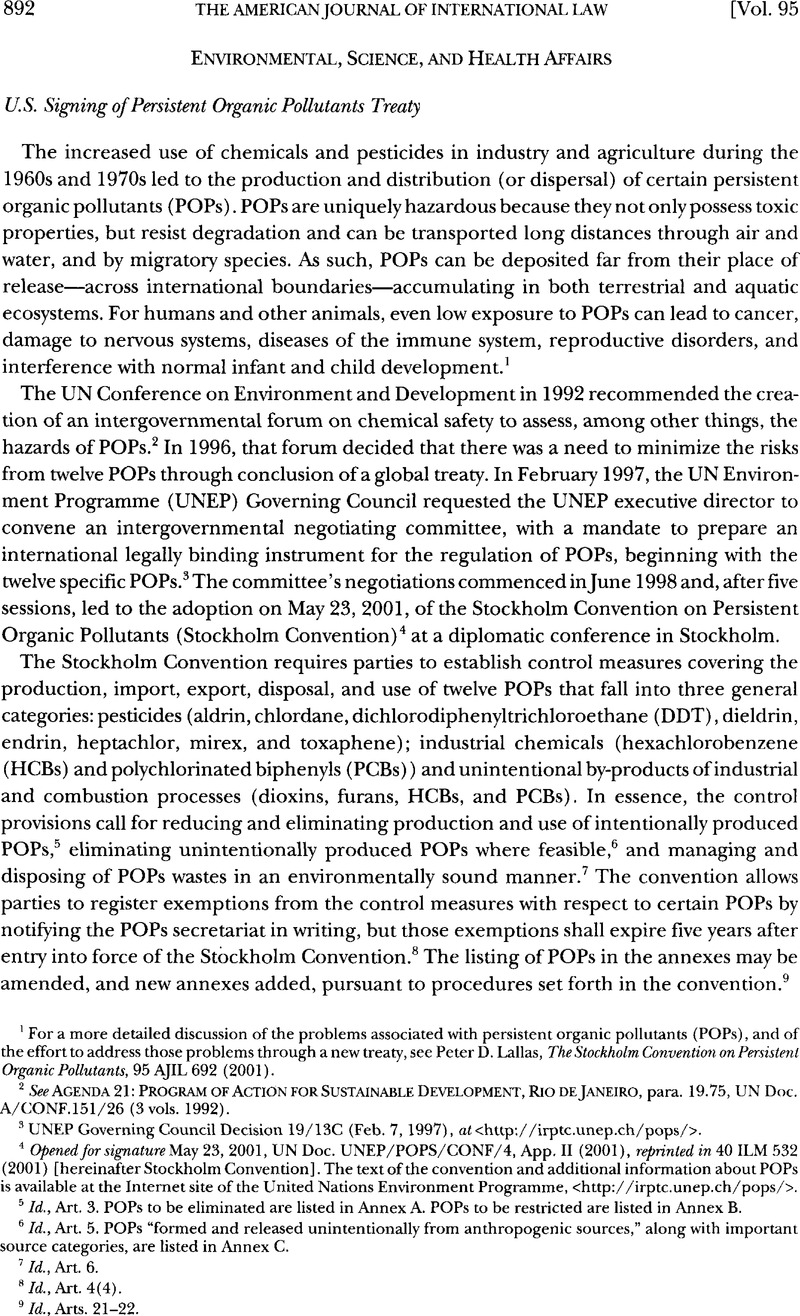No CrossRef data available.
Article contents
U. S. Signing of Persistent Organic Pollutants Treaty
Published online by Cambridge University Press: 10 March 2017
Abstract

- Type
- Contemporary Practice of the United States Relating to International Law
- Information
- Copyright
- Copyright © American Society of International Law 2001
References
1 For a more detailed discussion of the problems associated with persistent organic pollutants (POPs), and of the effort to address those problems through a new treaty, see Peter, D. Lallas, The Stockholm Convention on Persistent Organic Pollutants, 95 AJIL. 692, (2001)Google Scholar.
2 See Agenda 21: Program of Action for Sustainable Development, Rio de Janeiro, para. 19.75, UN Doc. A/CONF.151/26 (3 vols. 1992).
3 UNEP Governing Council Decision 19/13C (Feb. 7, 1997), at <http://irptc.unep.ch/pops/>.
4 Opened for signature May 23, 2001, UN Doc. UNEP/POPS/CONF/4, App. II (2001), reprinted in 40 ILM 532 (2001) [hereinafter Stockholm Convention]. The text of the convention and additional information about POPs is available at the Internet site of the United Nations Environment Programme, <http://irptc.unep.ch/pops/>.
5 Id., Art. 3. POPs to be eliminated are listed in Annex A. POPs to be restricted are listed in Annex B.
6 Id., Art. 5. POPs “formed and released unintentionally from anthropogenic sources, ” along with important source categories, are listed in Annex C.
7 Id., Art. 6.
8 Id., Art. 4(4).
9 Id., Arts. 21–22.
10 Id., Art. 9.
11 Id., Art. 10.
12 Id., Art. 11.
13 Id., Arts. 12–14.
14 Id., Art. 15.
15 Remarks Announcing Support for the Stockholm Convention on Persistent Organic Pollutants, 37 Weekly Comp. Pres. Doc. 630, 630–31 (Apr. 19, 2001).
16 Pesticides are regulated under the Federal Insecticide, Fungicide, and Rodenticide Act, 7 U.S.C. §§136–136y (1994).
17 See Toxic Substances Control Act, 15 U.S.C. §§2601–2692 (1994) (PCBs are addressed in §2605(e)).
18 See U.S. Dep’t of State Fact Sheet on Overview on Persistent Organic Pollutants (POPS): What the United States Has Done and What the Global Convention Will Do (Nov. 29, 2000), at <http://www.state.gov/www/global/oes/fs-001129_pops_overview.html>.




